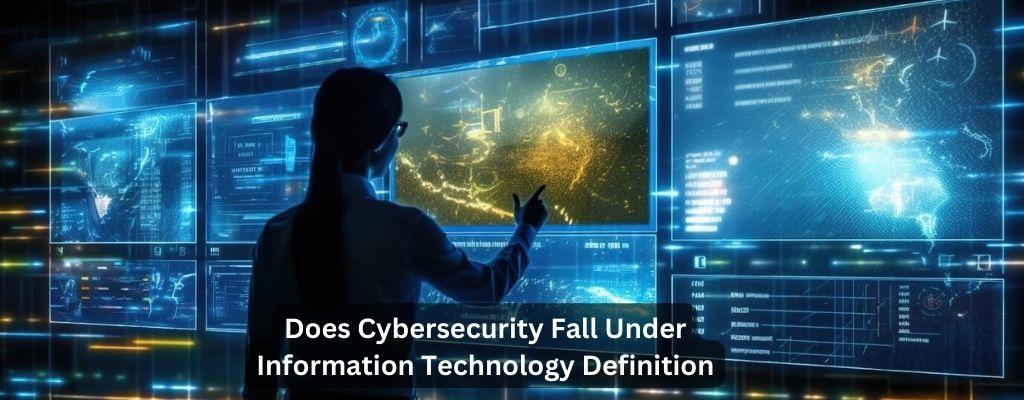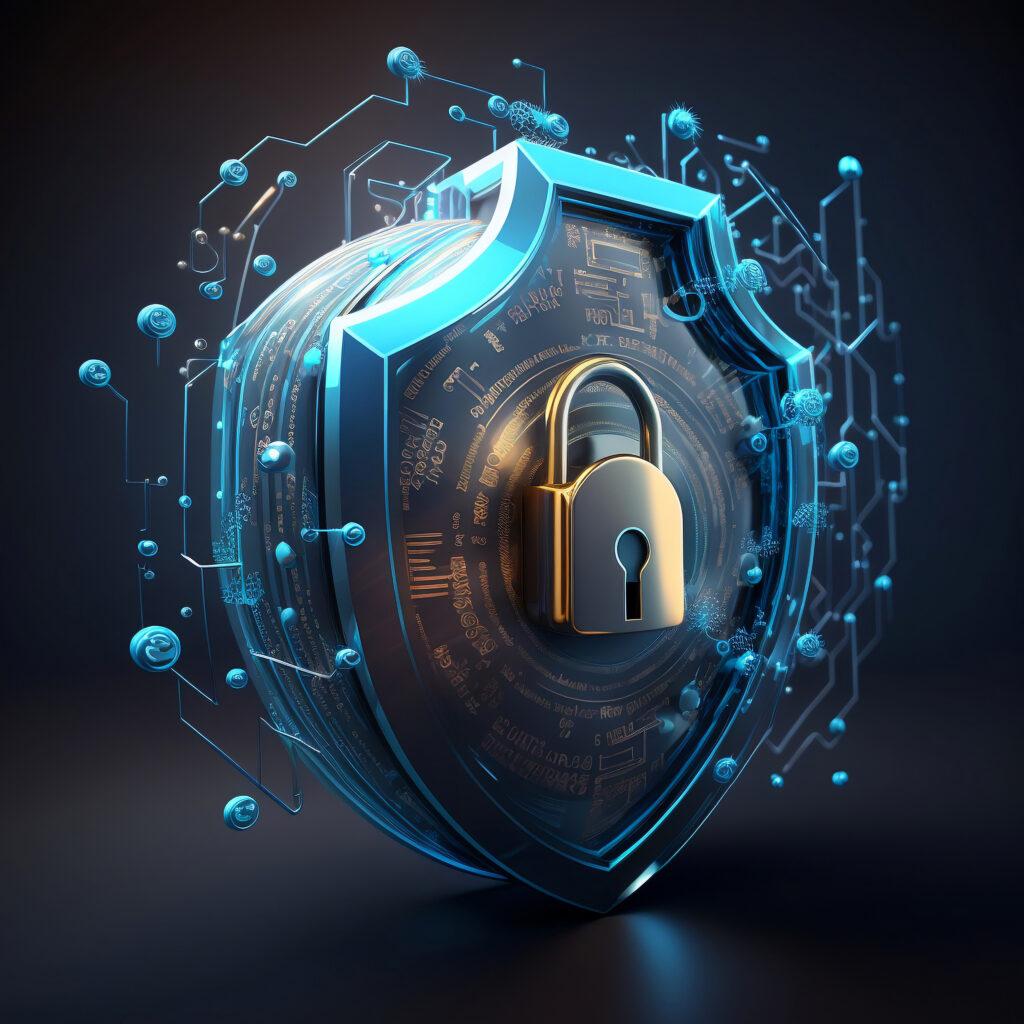
The terms “Information Technology” (IT) and “Cybersecurity” are frequently used interchangeably in the rapidly changing technological landscape, causing confusion regarding their precise relationship. While the two fields are unquestionably interconnected, they fill unmistakable needs inside the more extensive domain of innovation. The expression “Does Cybersecurity Fall Under Information Technology” exemplifies the investigation into the connection between cybersecurity and information technology. This article examines the intertwined nature of cybersecurity and information technology, looking at their similarities and differences as well as the crucial roles they each play in protecting digital assets.
Table of Contents
ToggleCharacterizing Data Innovation and Network Safety
The statement “Does Cybersecurity Fall Under Information Technology” raises a question about the relationship and categorization of cybersecurity, understanding their singular definitions is fundamental. Data innovation alludes to the utilization and board of PC frameworks, organizations, and programming to store, process, send, and recover data. It incorporates a wide range of exercises, including equipment and programming improvement, network organization, data set administration, and IT support.
Then again, network safety is a particular field inside IT that spotlights safeguarding PC frameworks, organizations, and information from unapproved access, assaults, harm, or burglary. It includes executing safety efforts to guarantee the classification, respectability, and accessibility of data. Online protection incorporates different angles, including network security, application security, endpoint security, and information security.
Interconnected Circles: Where IT and Network Protection Meet
The connection among IT and network protection is much the same as a harmonious organization, where each supplements the other in a powerful dance to brace the computerized scene. Data innovation gives the foundation, devices, and stages that network safety influences to establish a protected climate. IT experts assemble and keep up with the frameworks, organizations, and applications, while online protection specialists execute measures to defend these mechanical resources.
Basically, network protection is a basic subset of data innovation. The defensive safeguard makes preparations for possible dangers, weaknesses, and dangers that can make you think twice about the usefulness and security of IT frameworks. Without viable network protection gauges, the headways in data innovation would be helpless to malignant exercises, imperiling the privacy and trustworthiness of delicate data.
The Changing Face of Cyber Threats With the development of technology, cybercriminals’ strategies also evolve. The scene of digital danger is continually developing, with new and complex assault vectors arising consistently. This requires a proactive and versatile way to deal with network protection inside the more extensive structure of data innovation.
Digital dangers range from normal malware assaults and phishing plans to cutting edge advanced persistent threats (APTs) and ransomware. The attack surface for cyber threats has expanded as a result of the Internet of Things (IoT) and the prevalence of cloud computing. As a result, a comprehensive cybersecurity strategy that is incorporated into the fabric of information technology is required.
The Job of Data Innovation in Network Safety
Data innovation gives the establishment whereupon network safety procedures are fabricated. Secure systems and networks are designed, implemented, and maintained by IT professionals. To build a strong cybersecurity position, it is essential to incorporate security measures into the architecture of IT systems.
Key components of data innovation that add to network safety include:
Maintenance and design of the infrastructure: IT experts plan and keep up with the foundation that upholds advanced activities. This includes designing secure organization models, overseeing firewalls, and carrying out interruption recognition and avoidance frameworks.
Application Creation: The formation of secure applications is indispensable to a vigorous network safety system. IT designers should follow best practices for secure coding, tending to weaknesses that could be taken advantage of by digital assailants.
Network Security: IT managers are answerable for carrying out and keeping up with network security conventions. This incorporates getting switches, switches, and other organization gadgets to forestall unapproved access and information breaks.
Information The Executive: Data Innovation deals with the lifecycle of information, from capacity to recovery. This includes information encryption, access controls, and secure information removal rehearse, which are all imperative parts of online protection.
Endpoint Security: IT experts deal with the security of end-client gadgets, like PCs, computers, and cell phones. This includes introducing antivirus programming, leading ordinary updates, and executing endpoint safety efforts to moderate danger.
Fundamentally, data innovation provides the material on which the complicated embroidery of network safety is woven. The cooperation among IT and online protection guarantees that mechanical progressions are imaginative as well as versatile despite developing digital dangers.
Challenges in the Combination of IT and Online Protection
While its interconnectedness and network protection are unquestionable, challenges emerge in offsetting advancement with security. Associations frequently face the difficulty of focusing on usefulness and convenience against the basic principles of severe network protection measures. A comprehensive strategy that takes into account both recent technological advancements and potential security threats is necessary to achieve the desired balance.
Moreover, the lack of talented network safety experts represents a test for associations looking to brace for their safeguards. The demand for qualified cybersecurity experts continues to outpace supply as cyber threats become more sophisticated. Connecting this ability hole requires coordinated endeavors in schooling, preparing, and proficient advancement inside the IT and network protection spaces.
The Future Scene: Network Protection as a Center Part of an IT System
As innovation proceeds to progress and digital dangers become more refined, the reconciliation of network safety into by and large IT technique isn’t simply a decision yet a need. Network safety is, as of now, not an untimely idea; it is an essential component that must be incorporated into the beginning of every IT initiative.
Associations should embrace a proactive network safety position, integrating danger insight, risk evaluations, and security mindfulness preparation into their IT structures. Network protection measures ought to be dynamic and versatile, equipped for answering the developing idea of digital dangers.
In addition, the coming of advancements like man-made consciousness (computer based intelligence) and AI (ML) is reshaping the scene of network safety. These advancements are being utilized to upgrade danger discovery, computerize episode reaction, and reinforce generally online protection stances. As a feature of the more extensive IT environment, these developments are ready to reform how associations safeguard against digital dangers.
Conclusion (Does Cybersecurity Fall Under Information Technology)
All in all, while data innovation and network safety are particular substances, they are characteristically connected in the journey to a solid and tough computerized scene. Data innovation gives the devices and framework, while network protection braces these resources against an always growing exhibit of digital dangers.
The reconciliation of online protection into the texture of data innovation isn’t just a decision but an essential goal. As associations explore the intricacies of the computerized age, a brought together front that consolidates mechanical development with hearty network safety measures is fundamental for protecting delicate data and keeping up with the trust of clients.
The question is not whether term “Does Cybersecurity Fall Under Information Technology”, but rather how these two fields collaborate to shape the future of digital defense in the dynamic and interconnected world of technology. The collaboration among IT and network protection is the way to opening a solid and creative innovative scene for a long time into the future.

